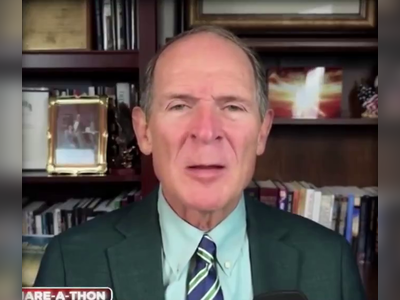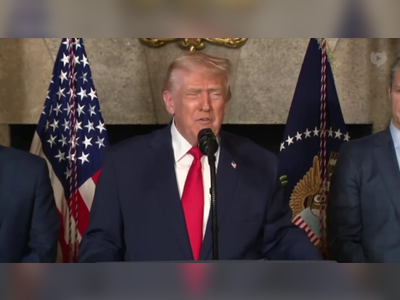
US Federal Reserve Holds Interest Rates Steady Amid Economic Concerns
The Federal Reserve maintains the benchmark interest rate as it addresses inflation and economic growth forecasts.
The Federal Reserve, the central banking authority of the United States, has decided to keep its benchmark interest rate unchanged in the range of 4.25% to 4.5%.
This decision reflects continuity in the Fed's policy, which was also maintained during its previous meeting in January.
The central bank's cautious stance comes amid growing economic uncertainties linked to tariff policies initiated under former President Donald Trump.
These tariffs have increased costs for consumers and businesses across the nation.
The U.S. government has recently imposed tariffs on goods imported from Canada, Mexico, and China, although some tariffs on Canadian and Mexican products have been rescinded.
This tariff strategy is expected to contribute to inflationary pressures, as domestic firms may elevate prices to offset their rising costs.
Former President Trump has indicated that he is not dismissing the possibility of a recession, adding to the climate of uncertainty.
Key economic indicators suggest the potential for an economic slowdown, with rising unemployment rates, reduced consumer spending, and a drop in business investment.
The Federal Reserve has revised its outlook for economic growth, lowering its forecast for Gross Domestic Product (GDP) growth to 1.7% for the current year, down from the earlier estimate of 2.1%.
The Fed's projections for interest rates indicate a committed approach to managing inflation, with an average benchmark rate predicted at 3.9% for 2025, suggesting the likelihood of two minor rate increases this year.
Aiming to contain inflation at around 2%, the Fed has increased its inflation expectations, forecasting an average rate of 2.7% for this year, up from a previous estimate of 2.5%.
Additionally, core inflation, which excludes volatile food and energy prices, is anticipated to reach 2.8%, indicating a rise from earlier forecasts.
This decision reflects continuity in the Fed's policy, which was also maintained during its previous meeting in January.
The central bank's cautious stance comes amid growing economic uncertainties linked to tariff policies initiated under former President Donald Trump.
These tariffs have increased costs for consumers and businesses across the nation.
The U.S. government has recently imposed tariffs on goods imported from Canada, Mexico, and China, although some tariffs on Canadian and Mexican products have been rescinded.
This tariff strategy is expected to contribute to inflationary pressures, as domestic firms may elevate prices to offset their rising costs.
Former President Trump has indicated that he is not dismissing the possibility of a recession, adding to the climate of uncertainty.
Key economic indicators suggest the potential for an economic slowdown, with rising unemployment rates, reduced consumer spending, and a drop in business investment.
The Federal Reserve has revised its outlook for economic growth, lowering its forecast for Gross Domestic Product (GDP) growth to 1.7% for the current year, down from the earlier estimate of 2.1%.
The Fed's projections for interest rates indicate a committed approach to managing inflation, with an average benchmark rate predicted at 3.9% for 2025, suggesting the likelihood of two minor rate increases this year.
Aiming to contain inflation at around 2%, the Fed has increased its inflation expectations, forecasting an average rate of 2.7% for this year, up from a previous estimate of 2.5%.
Additionally, core inflation, which excludes volatile food and energy prices, is anticipated to reach 2.8%, indicating a rise from earlier forecasts.
AI Disclaimer: An advanced artificial intelligence (AI) system generated the content of this page on its own. This innovative technology conducts extensive research from a variety of reliable sources, performs rigorous fact-checking and verification, cleans up and balances biased or manipulated content, and presents a minimal factual summary that is just enough yet essential for you to function as an informed and educated citizen. Please keep in mind, however, that this system is an evolving technology, and as a result, the article may contain accidental inaccuracies or errors. We urge you to help us improve our site by reporting any inaccuracies you find using the "Contact Us" link at the bottom of this page. Your helpful feedback helps us improve our system and deliver more precise content. When you find an article of interest here, please look for the full and extensive coverage of this topic in traditional news sources, as they are written by professional journalists that we try to support, not replace. We appreciate your understanding and assistance.











